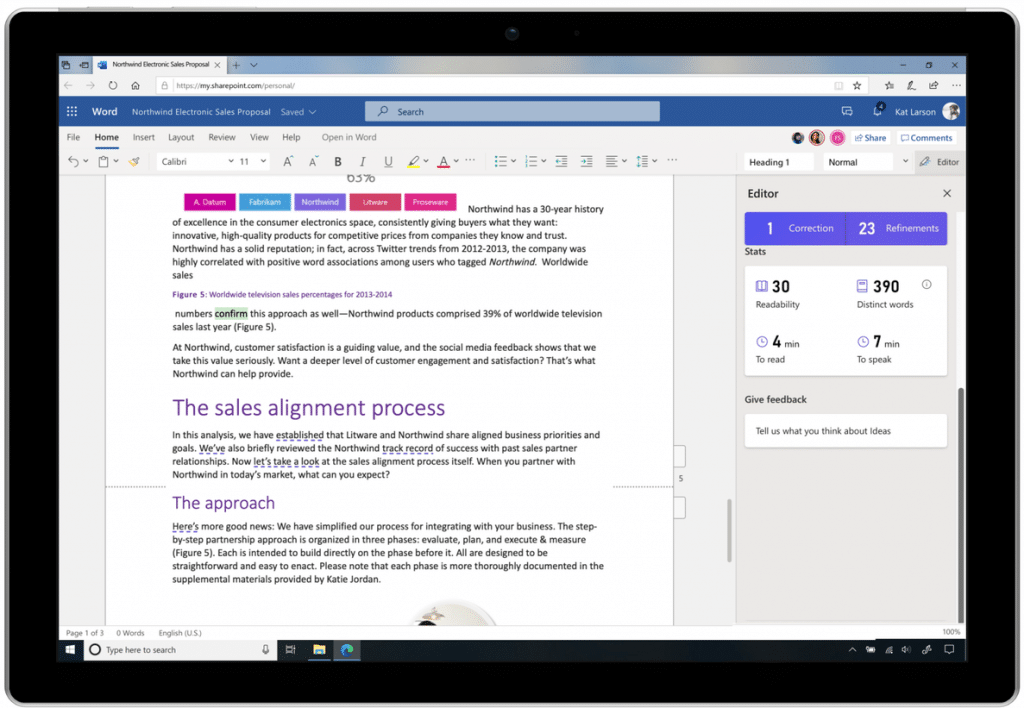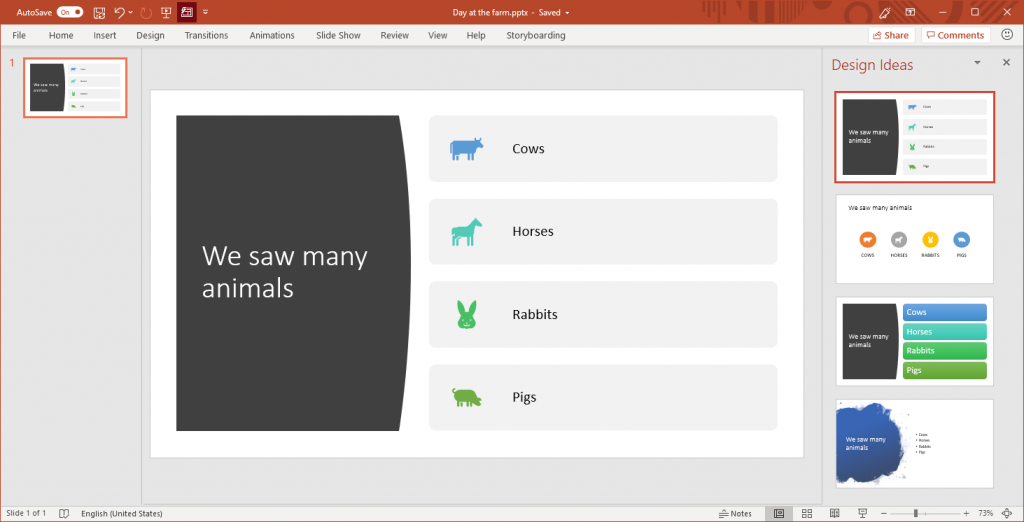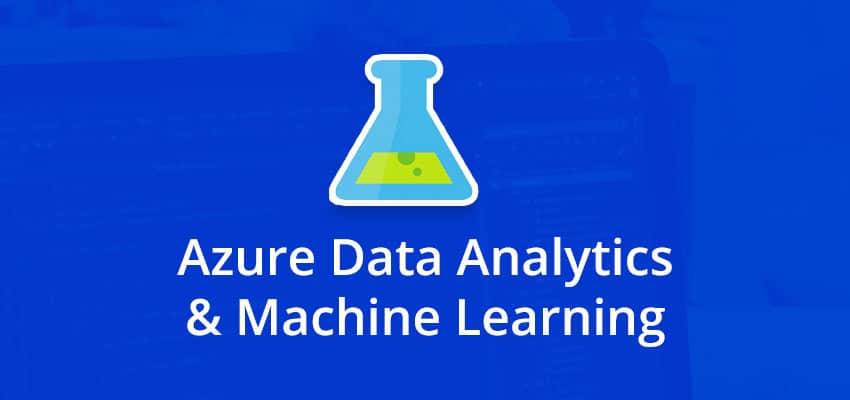

Microsoft 365 is innovating to deliver experiences powered by artificial intelligence (AI) to billions of users every day. Whether through familiar products like Outlook and PowerPoint, or through new offerings such as Presenter Coach and Microsoft Editor across Word, Outlook, and the web, Microsoft 365 relies on Azure AI to offer new capabilities that make their users even more productive.
Azure AI is a set of AI services built on Microsoft’s breakthrough innovation from decades of world-class research in vision, speech, language processing, and custom machine learning. What is particularly exciting is that Azure AI provides customers with access to the same proven AI capabilities that power Microsoft 365, Xbox, HoloLens, and Bing. In fact, there are more than 20,000 active paying customers—and more than 85 percent of the Fortune 100 companies have used Azure AI in the last 12 months.
Azure AI helps organisations:
The announcement of Microsoft Editor is one example of innovation. Editor, your personal intelligent writing assistant is available across Word, Outlook.com, and browser extensions for Edge and Chrome. Editor is an AI-powered service available in more than 20 languages that has traditionally helped writers with spell check and grammar recommendations. Powered by AI models built with Azure Machine Learning, Editor can now recommend clear and concise phrasing, suggest more formal language, and provide citation recommendations.

Additionally, Microsoft PowerPoint utilizes Azure AI in multiple ways. PowerPoint Designer uses Azure Machine Learning to recommend design layouts to users based on the content on the slide. In the example image below, Designer made the design recommendation based on the context in the slide. It can also can intelligently crop objects and people in images and place them in optimal layout on a slide. Since its launch, PowerPoint Designer users have kept nearly two billion Designer slides in their presentation.

PowerPoint also uses Azure Cognitive Services such as the Speech service to power live captions and subtitles for presentations in real-time, making it easier for all audience members to follow along. Additionally, PowerPoint also uses Translator Text to provide live translations into over 60 languages to reach an even wider audience. These AI-powered capabilities in PowerPoint are providing new experiences for users, allowing them to connect with diverse audiences they were unable to reach before.
These same innovations can also be found in Microsoft Teams. As we look to stay connected with co-workers, Teams has some helpful capabilities intended to make it easier to collaborate and communicate while working remotely. For example, Teams offers the ability of live captioning meetings, which leverages the Speech API for speech transcription. But it doesn’t stop there. As you saw with PowerPoint, Teams also uses Azure AI for live translations when you set up Live Events. This functionality is particularly useful for company town hall meetings or even for any virtual event with up to ten thousand attendees, allowing presenters to reach audiences worldwide.
These are just a few of the ways Microsoft 365 applications utilize Azure AI to deliver industry-leading experiences to billions of users. When you consider the fact that other Microsoft products such as Microsoft 365, Xbox, HoloLens 2, Dynamics 365, and Power Platform all rely on Azure AI, you begin to see the massive scale and the breadth of scenarios that only Azure can offer. Best of all, these same capabilities are available to anyone in Azure AI.

The Azure Data Analytics & Machine Learning bootcamp will cover all you need to know about Microsoft data and analytics platforms, data storage options, ingesting data and machine learning.